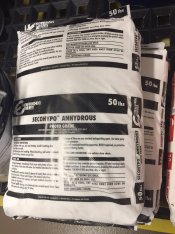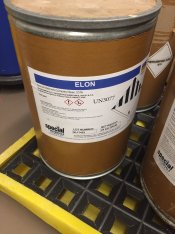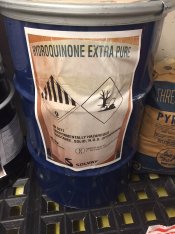Donald Qualls
Subscriber
Every now and then, I read something that makes it seem like we might in fact be in the End Days. Not of the world in terms of being able to eat and breathe, but the end of film. With Kodak and Fuji both having their bad days, it's not completely out of the question.
Now, photography won't end -- there's wet plate DIY, there are a couple suppliers of dry plates and those emulsions could, in theory, be made faster than the current EI 25 from J. Lane, as well as becoming panchromatic.
Making our own developers is fairly easy -- coffee and beer aren't going anywhere, and even if washing soda goes off the market, baking soda won't and is fairly easy to convert.
Fixer, now, is another story.
Salt water is super-slow, and I'm not really convinced it works at all. Sodium sulfite is also very slow and has little capacity. Thiosulfates (most commonly that of sodium) have been in use for this for almost two centuries -- but while I know how a lot of basic chemicals are manufactured, I don't recall ever reading how thiosulfates are made. I presume (at least in commercial quantities) they're not extracted from onions -- though I understand that is technically possible. As I recall, thiosulfate can oxidize to sulfite, which oxidizes to sulfate -- so is there an electrolytic process that can convert, say, battery acid into sulfonic acid that can then be reacted with a sodium salt or ammonium hydroxide to get a thiosulfate solution?
Now, photography won't end -- there's wet plate DIY, there are a couple suppliers of dry plates and those emulsions could, in theory, be made faster than the current EI 25 from J. Lane, as well as becoming panchromatic.
Making our own developers is fairly easy -- coffee and beer aren't going anywhere, and even if washing soda goes off the market, baking soda won't and is fairly easy to convert.
Fixer, now, is another story.
Salt water is super-slow, and I'm not really convinced it works at all. Sodium sulfite is also very slow and has little capacity. Thiosulfates (most commonly that of sodium) have been in use for this for almost two centuries -- but while I know how a lot of basic chemicals are manufactured, I don't recall ever reading how thiosulfates are made. I presume (at least in commercial quantities) they're not extracted from onions -- though I understand that is technically possible. As I recall, thiosulfate can oxidize to sulfite, which oxidizes to sulfate -- so is there an electrolytic process that can convert, say, battery acid into sulfonic acid that can then be reacted with a sodium salt or ammonium hydroxide to get a thiosulfate solution?









